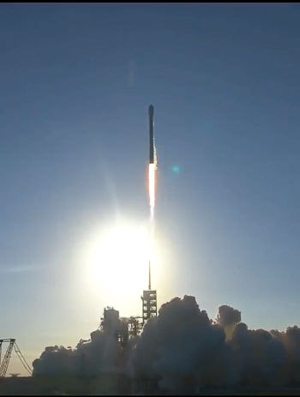
At the Kennedy Space Centre in Florida yesterday, an SES-10 satellite was successfully launched into space on board a SpaceX Falcon 9 rocket, from where it will provide broadcasting, enterprise and mobility services across Latin America.
SES-10 is the first geostationary commercial satellite to ever launch on a flight-proven first-stage rocket booster, and will be wholly dedicated to to providing service to Latin America, augmenting SES’s capabilities across the region.
“The successful launch of SES-10 on SpaceX's first ever mission using a flight-proven rocket is opening up a new era of spaceflight. We are proud to have partnered with SpaceX on this journey of innovating and using reusable rockets that will make access to space more efficient in terms of cost and manifest management," said Martin Halliwell, Chief Technology Officer at SES.
“The additional capacity offered by SES-10 is ideal for providing additional TV services with better picture quality as well as faster broadband services – both of which will be welcomed by millions of people throughout Latin America and the Caribbean,” he added.
“We are thrilled to have achieved the successful launch of a flight proven Falcon 9. This is an historic milestone on the path to complete and rapid reusability,” said Gwynne Shotwell, President and COO at SpaceX “We are pleased to have accomplished this milestone with SES, which has been a strong supporter of SpaceX and innovation over the years.”
SES-10 is built by Airbus Defence and Space and is based on the Eurostar E3000 platform. The satellite will utilise an electric plasma propulsion system for on-orbit manoeuvres and a chemical system for initial orbit raising and some on-orbit manoeuvres.








